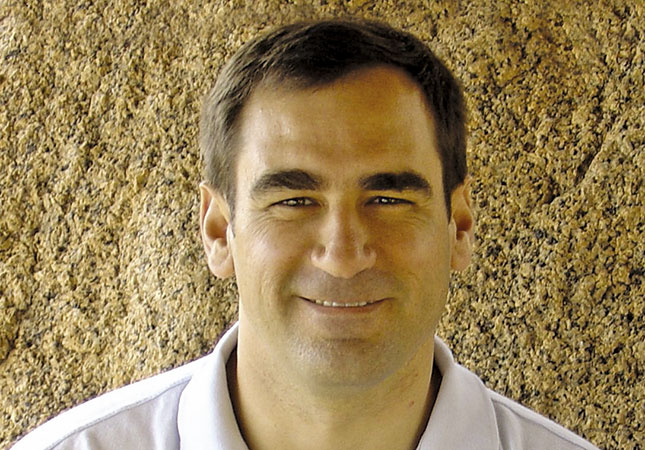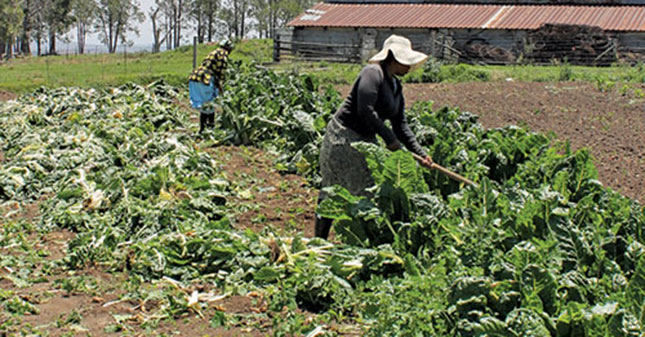
What is the extent of South Africa’s groundwater reserves?
The country has roughly the same amount of groundwater as surface water – approximately 7 500 million cubic metres per year. Groundwater constitutes between 12,5% and 20% of South Africa’s total present water use.
READ:Making the most of groundwater
Is groundwater use increasing?
Yes, it has increased by an average of 0,6%/year during the past three years. Yet only about 40% (3 billion m3/year) of availableg roundwater is used. At least a further 2,5 billion m3 of groundwater could be developed economically. Therefore, there is considerable potential to increase groundwater supplies.
Why do we need to tap into this water?
Groundwater resources can be developed fairly quickly and cheaply, and can reduce the strain which high water demand places on surface water resources. The government’s National Water Resource Strategy 2 identifies groundwater as a large, unused resource that plays a key role in achieving South Africa’s growth, development and socioeconomic
priorities. Water demand is likely to grow at about 1,2%/year during the next 10 years and the development of surface water is becoming more costly and challenging. The Department of Water Affairs (DWA) is mandated by national government to enhance the quality and quantity of our water resources and to diversify sources.
What is DWA’sapproach to meeting South Africa’s growing water needs?
During the past seven years the DWA has developed many reconciliation strategies for water management, both for big metro municipalities, and smaller towns and villages. These strategies entail, among other things, finding sustainable ways to source additional water supplies. (See www.dwa. gov.za’).
What are the challenges associated with utilising groundwater?
These lie in the implementation ofgroundwater schemes and sustainable management of groundwater resources.Or to put it differently: the balancing act of selling groundwater and preventing over-abstraction. The bankability of regional schemes, the credibility of groundwater as a bulk scheme source, poor management of boreholes and well-fields, institutional responsibility, acceptable quality, and the treatment of groundwater, still challenge groundwater development. These challenges need to be overcome so that groundwater can play its role in addressing South Africa’s water needs.

This diagram illustrates artificial recharge with injection and abstraction boreholes tapping directly into the underground aquifer. The process allows surplus surface water to be transferred underground for storage. Artificial recharge is much cheaper than most new resource developments, such as desalination.
How many towns in SA are currently reliant on groundwater?
Two thirds of the country depends solely or partially on groundwater for domestic needs. More than 420 towns are totally or largely dependent on groundwater, with many areas in the country using groundwater as the sole source for irrigation purposes. Groundwater is essential to the water supply of most of the towns in the drier parts of South Africa, for example, Beaufort West, Prince Albert, Graaff-Reinet, Atlantis and Musina. Even large cities like Port Elizabeth, Pretoria and Johannesburg are partly dependent on groundwater supplies.
How much of SA’s groundwater resources does agriculture use?
About 59% is used for irrigation purposes and 6% for watering livestock. The balance goes to mining (13%), domestic water supply services (13%), industry (3%), and Schedule 1 (6%). Schedule 1 permits the use of relatively small quantities of groundwater, mainly for domestic purposes (including non-commercial gardening), but also in emergency situations and for certain recreational purposes.
What impact could climate change have on groundwater levels?
Certain areas in the country could experience higher temperatures with more frequent floods and droughts. This will have an impact on the amount of recharge/infiltration into the ground to the aquifers. Groundwater levels will then drop because of lower recharge.
Can we change the effect of climate change?
We can counteract the effects of climate change by following basic groundwater management principles and through recharge enhancement methods such as soil and land practice management, resource protection zones and artificial recharge.
What are the threats to our groundwater?
There are several – including pollution from acid mine drainage, urban development and deteriorating standards in wastewater treatment, and the infiltration of agro-chemicals.
What methods are available to treat groundwater? Are expensive, hi-tech solutions the only option?
Treating groundwater quality does not have to be costly. Sand filtration basins, aerator and evaporation tanks are just a few of the methods available. The DWA and the Water Research Commission have produced a detailed strategy for artificial recharge to optimise usage of SA’s aquifers. Please explain. Artificial recharge is the process whereby mostly surplus surface water is transferred underground to be stored in an aquifer. The most common method used involves injecting water into boreholes and transferring it into earthen basins, called spreading basins, where it infiltrates the subsurface. Artificial recharge is much cheaper than most new resource developments such as desalination.
What is the benefit of underground water storage?
It is an efficient way to store water because it is not vulnerable to evaporation losses and is relatively safe from contamination. Artificial recharge can be implemented virtually anywhere where groundwater is used or where its use is being planned. It can augment water supplies on a large scale such as in Atlantis near Cape Town. It can also be used to boost single borehole schemes – Kharkhams in Namaqualand is an example – or for individual households, such as Hermanus in the southern Cape.
Can farmers practise artificial recharge?
Yes, there are various methods of directing rainwater or runoff underground as quickly as possible. These include small infiltration dams, ploughing trenches, deviation weirs and infiltration trenches. A more hi-tech method is injection boreholes through which water is injected directly into the aquifer. This needs a great deal of management in order to prevent harming the aquifer through pollutants or clogging. Visit www.artificialrecharge.co.za for more information.
Do you have advice for those considering artificial recharge?
Start monitoring groundwater levels immediately; they will provide a good indication of the aquifer’s potential to accept water. Electronic data loggers are easy to use and affordable. Other time-series data to start collecting are the quality, reliability and volume of water available for recharge, and groundwater abstraction from the aquifer.
Phone Fanus Fourie on 012 336 7303 or 082 801 5598, or email him at [email protected].
This article was originally published in the 15 November 2013 issue of Farmers Weekly.













